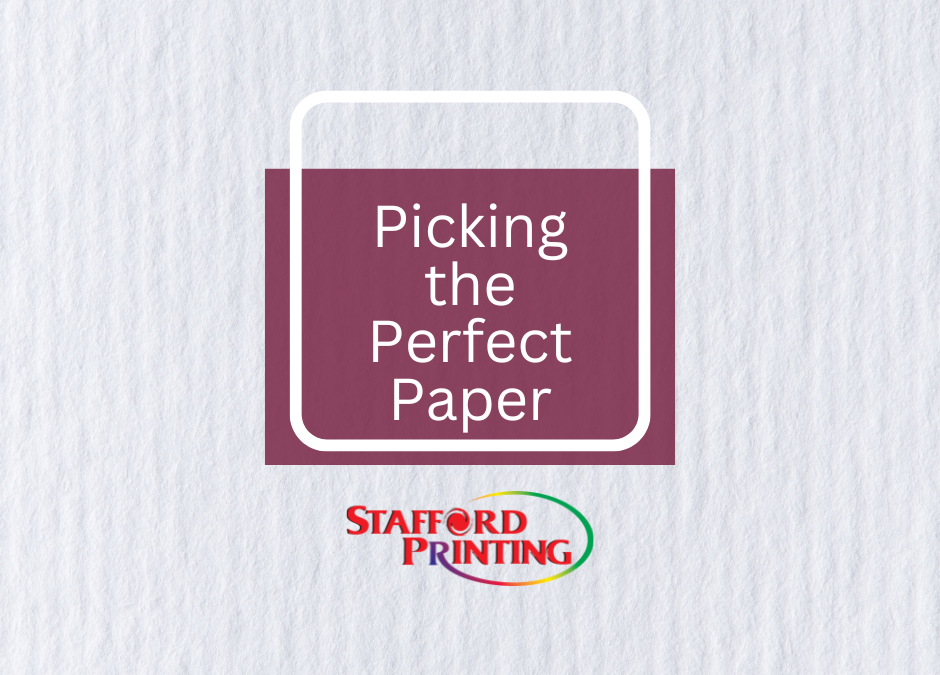You’ve created the perfect design, hit your word count on that book, or jotted down all the important information, but now what? When you’re creating print media, it’s hard to know which paper type is right for your project. Finding the perfect paper for your media is essential because it communicates to your audience the type of investment you’re willing to put into your work—and therefore, those consumers you’re trying to reach. From weight to brightness to opacity, your paper type holds significance in the appearance of your product and your brand. So how do you know which paper is right for your project? Let’s ask the experts from Stafford Printing! They’ve got your project covered from front to back.
First, you want to assess which type of paper matches best with the needs of your project. Here’s a quick rundown of our paper types:
- Bond: this is a relatively high-grade paper stock that can come in a range of pastels, neutrals, and matching cover weights. This paper type is generally used for fliers.
- Writing Paper: this is uncoated paper used for stationery. It comes in a range of colors and flocking options, and has cover and text weights.
- Uncoated Book: this paper comes in a range of colors and is more opaque than bond or writing papers. It is used for direct mail, newsletters, and catalogs.
- Text: this type of paper is more flexible and lightweight. It is used for brochures, annual reports, and letterhead.
- Coated Book: unlike uncoated book, this type of paper has a glossier finish that seals the paper. Customers will find the best use of this paper with magazines and catalogs.
- Cover: cover paper is heavier and thicker than other papers, similar in feel to cardstock. Customers use this paper for business cards, tickets, postcards, pocket folders, or greeting cards.
- Translucent Vellum: this is semi translucent stock that comes in a variety of colors and weights. The most common uses are see-through envelopes and overlays.
- Label: this is one of advertising’s favorite paper types. It is a gummed, pressure sensitive paper that creates products such as labels and stickers.
Now that you know which paper type is right for your product, you can choose the finish for your product. The finish supports the final appearance and feel of your product—whether it’s glossy or flat, smooth or rough. Most paper types have a specific recommended finish, so it’s important to have a basic understanding of each before finalizing your order with your printing press. Here’s a rundown on the finishing types:
- Vellum: has a subtle roughness. Can be used for writing paper, text paper, cover paper, index paper, or newsprint paper.
- Cockle: resembles the texture of homemade paper. This can be used for bond paper, writing paper, or text paper.
- Coated: this finish type has a coating applied to provide a glossier appearance. This is used for glossier media with paper such as coated book, index paper, and label. For some products, you can even use a cast-coated finish, which provides an exceptionally glossy look.
- Matte: this finish type absorbs light rather than reflects it, meaning that it has a very smooth look that does not shine in the light. The papers that can be used for a matte finish are coated book, cover paper, and label paper.
- Linen: this finish type is unique in that it resembles linen cloth. It is exclusively used with writing paper, text paper, or cover paper.
- Smooth: a smooth finish refers to paper that has been passed through a set of rollers so that there is little to no texture left on the product. This finish type is the most versatile and can be used with all of our paper types, except coated book and newsprint.
Now that you know which type of paper and finish is desirable for your project, you can feel confident going to your local print store knowing just what you need.
